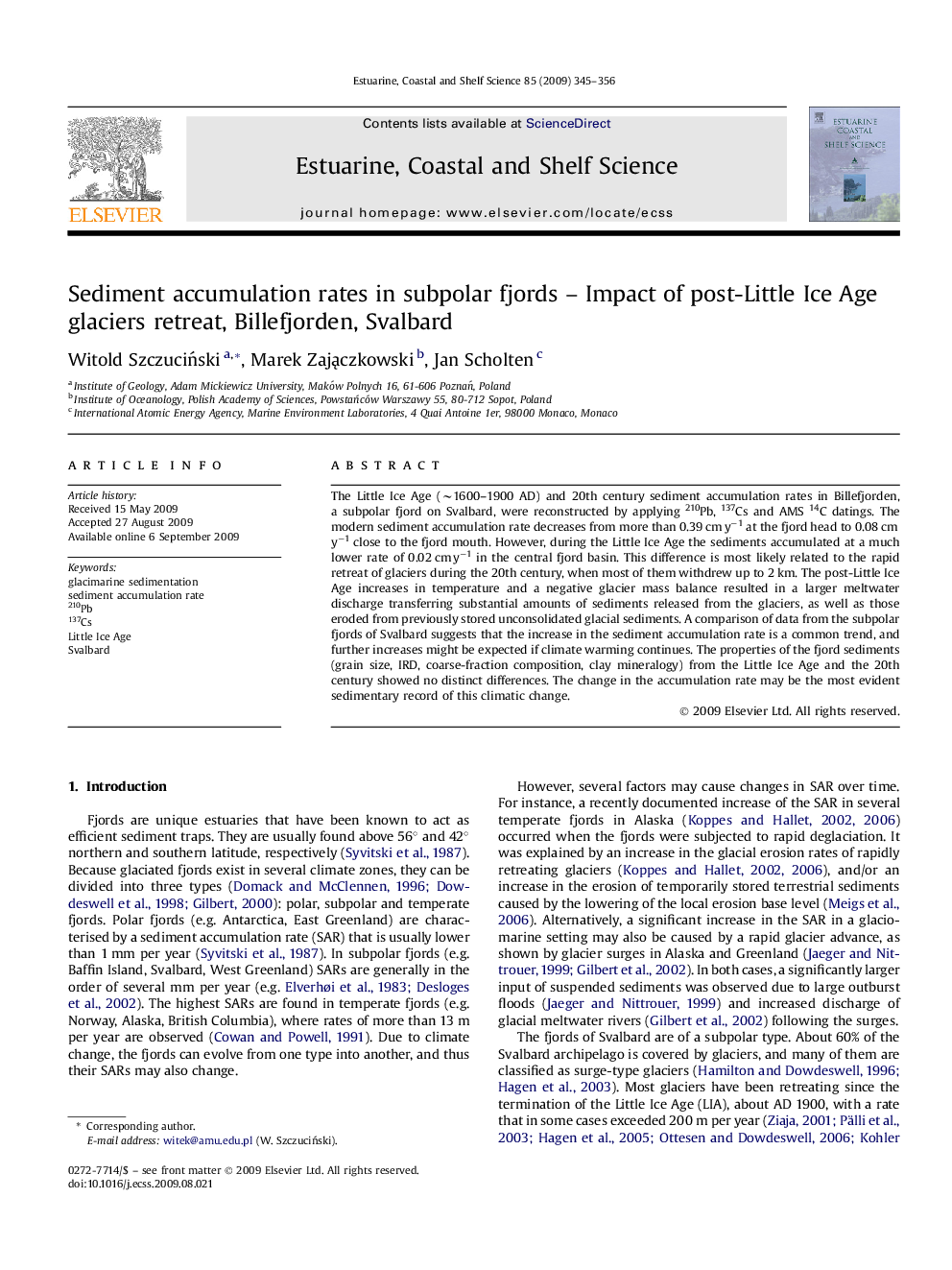| Article ID | Journal | Published Year | Pages | File Type |
|---|---|---|---|---|
| 4540712 | Estuarine, Coastal and Shelf Science | 2009 | 12 Pages |
The Little Ice Age (∼1600–1900 AD) and 20th century sediment accumulation rates in Billefjorden, a subpolar fjord on Svalbard, were reconstructed by applying 210Pb, 137Cs and AMS 14C datings. The modern sediment accumulation rate decreases from more than 0.39 cm y−1 at the fjord head to 0.08 cm y−1 close to the fjord mouth. However, during the Little Ice Age the sediments accumulated at a much lower rate of 0.02 cm y−1 in the central fjord basin. This difference is most likely related to the rapid retreat of glaciers during the 20th century, when most of them withdrew up to 2 km. The post-Little Ice Age increases in temperature and a negative glacier mass balance resulted in a larger meltwater discharge transferring substantial amounts of sediments released from the glaciers, as well as those eroded from previously stored unconsolidated glacial sediments. A comparison of data from the subpolar fjords of Svalbard suggests that the increase in the sediment accumulation rate is a common trend, and further increases might be expected if climate warming continues. The properties of the fjord sediments (grain size, IRD, coarse-fraction composition, clay mineralogy) from the Little Ice Age and the 20th century showed no distinct differences. The change in the accumulation rate may be the most evident sedimentary record of this climatic change.
